当前位置:仪器网 > 产品中心 > PIXIS 成像型与光谱型相机
返回产品中心>PIXIS 成像型与光谱型相机
| 参考价 | 面议 |
- 公司名称 杭州谱镭光电技术有限公司
- 品牌
- 型号
- 所在地
- 厂商性质 $CompanyTypeName
- 更新时间 2023/2/9 17:04:25
- 访问次数 365
当前位置:仪器网 > 产品中心 > PIXIS 成像型与光谱型相机
返回产品中心>| 参考价 | 面议 |
PIXIS是市场上*的一款提供全金属真空封存,深度制冷的科研级CCD相机。真空质量终生质保。高量子效率,高度集成化,低噪声设计的科学成像/光谱相机,可应用于紫外到近红外各类实验。
普林斯顿仪器(PI)的成像产品,包括:CCD相机,高速增强型ICCD,电子增益型EMCCD,高速增益emICCD,X射线相机,铟镓砷相机。我们致力于为您提供创新的方案,解决你棘手挑战性的问题。
我们坚持技术创新来为科研工作者提供高性能的成像技术,包括SOPHIA,ProEM,PI-MAX4,NIRvana等突破性的产品。
PIXIS 成像型与光谱型相机
| 行业标准,高性能CCD相机 PIXIS系列相机是集成度高,低噪声设计的科学成像/光谱相机,响应范围从紫外到近红外。结合PI*的XP制冷技术,PIXIS是市场上*的一款提供全金属真空封存,深度制冷的科研级CCD相机。真空质量终生质保。 高量子效率,超低噪声电子电路,使得PIXIS成为高要求的低光实验中理想的选择,例如:拉曼光谱,波什-爱因斯坦凝聚态(BEC),太阳能器件检测,荧光实验等等。 PIXIS相机可以选择eXcelon镀膜技术,增加其敏感度同时抑制近红外波段的干涉现象。
PIXIS相机具有以下特点: • 支持不同芯片尺寸 • 频谱响应从~ 180nm至~1100nm (紫外到近红外)波段,更有eXcelon抗干涉技术eXcelon technology。 • 的全金属真空封存技术 • 灵活的读出设置 • 高速USB2.0接口 • 功能强大的 64位 LightField 操作平台 |
产品综述
| PIXIS系列相机是高度集成化,低噪声设计的科学成像/光谱相机,可应用于紫外到近红外各类实验。 PIXIS系列有前照型CCD,后照型CCD,后照深耗尽型CCD,适合成像或成谱的芯片格式。每一款PyLoN相机都提供了同类相机中的敏感度,的噪声以及的动态范围。
Images courtesy of Prof. Wolfgang Ketterle, MIT. |
产品特点
| 探测范围180nm 至 1100nm: 可满足各类实验需求 可选高于95%的量子效率 紫外波段的量子效率,可选择紫外增强型CCD 或者 Unichrome/Lumogen phosphor镀膜 结合eXcelon技术,提升相机的敏感度。
|
| 普林斯顿仪器的真空封存技术: 终生真空质保 风冷或者水冷均可达-90℃ 长时间曝光下的超低暗噪声 单层透射窗口增加芯片的敏感度 无需额外的维护
|
| 的eXcelon技术,用于背照型CCD: 增强的灵敏度,带来更好的量子效率 减少背照式CCD的近红外干涉现象 查看更多 eXcelon 的信息
|
| 双读出放大器: 增强的系统灵活性 高敏读出放大器具有极低的读出噪声 大动态读出放大器增加了数据深度
|
| 高速USB2.0数据接口: 任何电脑直接连接,无需额外硬件 即插即用 真正的16位数据传输能力,可达2MHz读出速度
|
| LightField的64-位操作平台: 直观易上手的用户界面设计. 内置数学引擎,实时获得图像与光谱的数据分析. PICAM(64)位通用程序语言,方便的程序修改与编译. 与LabVIEW,MATLAB,EPICS等第三方软件无缝对接. IntelliCal 精准的波长校准和强度校准,一键完成。
|
型号规格
| 用于成像和光谱学的PIXIS CCD相机型号比较和数据表
| ||||||||||||||||||||||||||||||||||||||||||||||||||
|
| ||||||||||||||||||||||||||||||||||||||||||||||||||
| Imaging cameras (anchor link to table) | Spectroscopy cameras (anchor link to table)
Sensor Types:
Princeton Instruments' proprietary eXcelon process increases detector sensitivity in the blue and NIR while suppressing etalon interference fringes. B/I DD (Back-illuminated deep depletion) sensors have up to 95% QE in the NIR with minimal etaloning. B/I (Back-illuminated) sensors have up to 95% QE in the visible but are subject to etaloning in the NIR. BUV (Enhanced UV) sensors offer the highest UV sensitivity with moderate visible sensitivity. F/I (Front-illuminated) CCD sensors offer economical performance from ~400-1000 nm with up to ~50% QE and negligible etaloning. Open Electrode architecture improves QE by reducing the area of the electrodes.
Pixel Size:
All PIXIS cameras offer 99% fill factors Larger pixels offer higher well capacity Smaller pixels offer higher spatial resolution in some cases; for more information, see hyperlink to IsoPlane page
Peak QE:
Maximum values of quantum efficiency (QE) are n at 25° C. |
产品应用
| Tip-Enhanced Raman Spectroscopy TERS - Tip-Enhanced Raman spectroscopy
Fluorescence, Phosphorescence, and Photoluminescence Spectroscopy Fluorescence, phosphorescence and photoluminescence occur when a sample is excited by absorbing photons and then emits them with a decay time that is characteristic of the sample environment.
Astronomical Imaging Astronomical imaging can be broadly divided into two categories: (1) steady-state imaging, in which long exposures are required to capture ultra-low-light-level objects, and (2) time-resolved photometry, in which integration times range from milliseconds to a few seconds.
General Raman The most common application of Raman spectroscopy involves the vibrational energy levels of a molecule. Incident laser light in the UV, visible or NIR, is scattered from molecular vibrational modes.
Surface-Enhanced Raman Spectroscopy SERS - Surface-enhanced Raman spectroscopy
Bose-Einstein Condensate Bose-Einstein condensate (BEC) can be regarded as matter made from matter waves. It is formed when a gas composed of a certain kind of particles, referred to as “bosonic” particles, is cooled very close to absolute zero.
Coherent Anti-Stokes Raman Spectroscopy Coherent Anti-Stokes Raman spectroscopy (CARS) a type of non-linear Raman spectroscopy. Instead of the traditional single laser, two very strong collinear lasers irradiate a sample.
Stimulated Raman Scattering Stimulated Raman scattering takes place when an excess of Stokes photons that were previously generated by normal Raman scattering are present or are deliberately added to the excitation beam.
Micro-Computed Tomography Micro Computer Tomography is a unique technique for the noninvasive, nondestructive 3D characterization of materials down to a micrometer scale. |
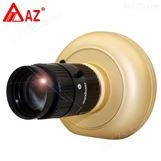
|
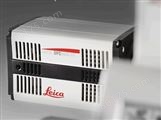
|
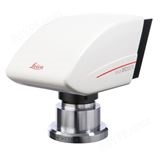
|
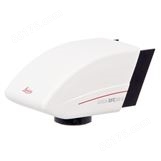
|
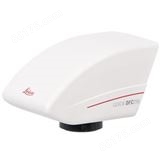
|

|
*您想获取产品的资料:
个人信息: